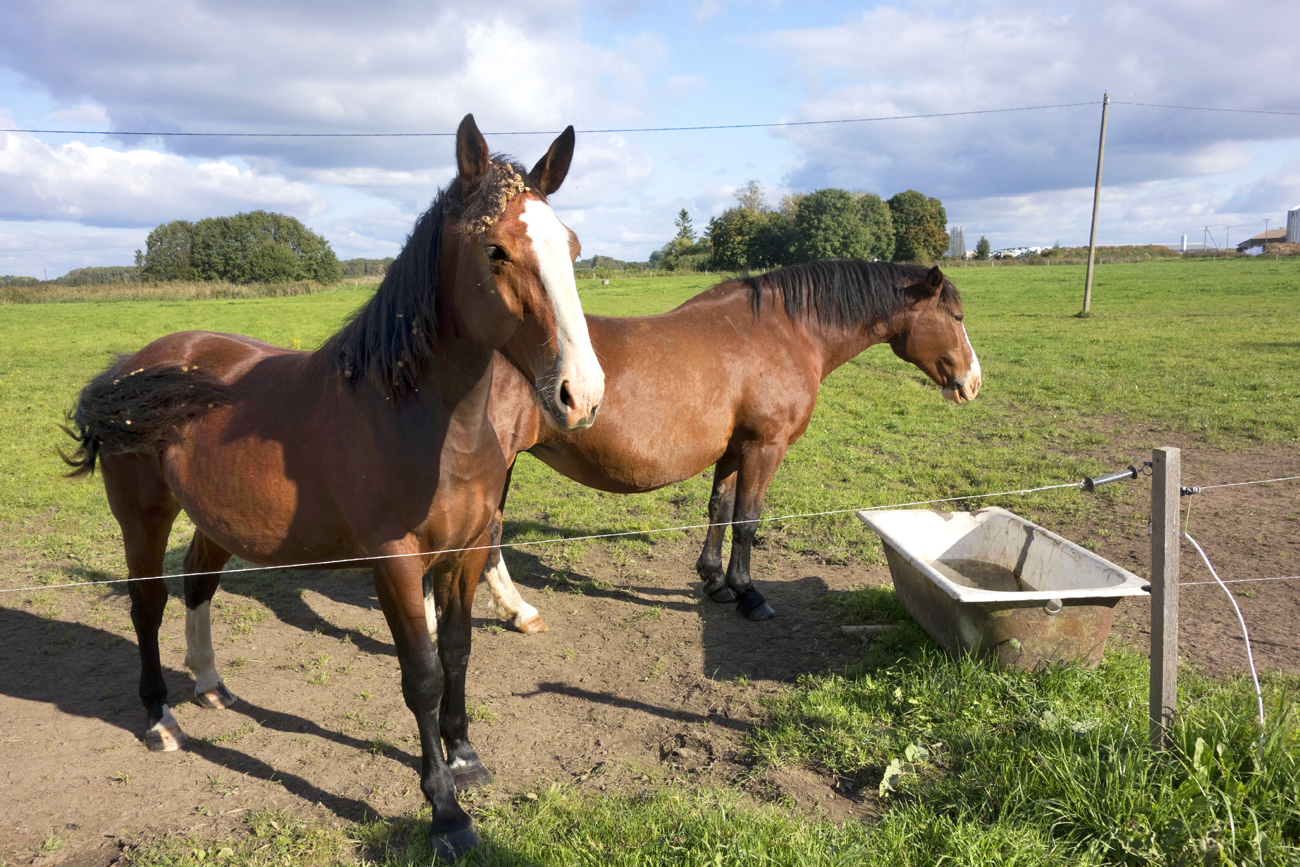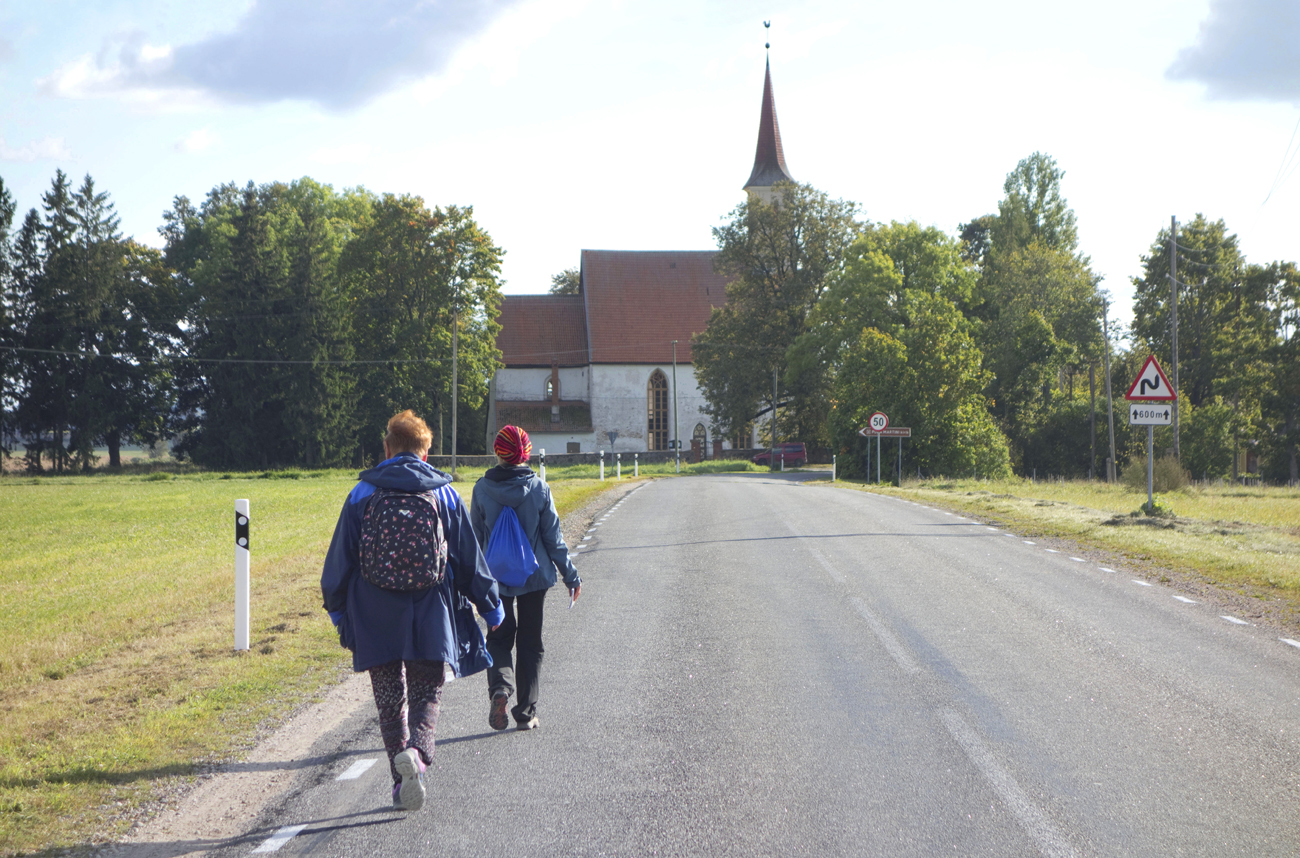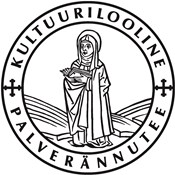Verevi and Suure-Rakke
Jõesuu first. Here in Rannu-Jõesuu, Suur-Emajõgi (Big Emajõgi River) starts, the only outflow from the lake, taking the waters of Lake Võrtsjärv for 100 km to Lake Peipsi. It sometimes happens during the spring floods that the river between Jõesuu and the Pedja estuary flows backwards and brings more water to Lake Võrtsjärv.
The pilgimage route then leads to the village of Verevi; the path begins on the road between Jõesuu and Kiviranna.
Verevi village is the next destination because, firstly, it is a nice village with a long history, and secondly – we get off the big road. It takes under an hour to get there from Kiviranna.
We walk back a bit from Kiviranna along the edge of the road, and turn to the gravel path at Verevi bus stop. At the crossroad we walk straight ahead (another bus stop here), until another crossroad (with post boxes).
We are in the heart of Verevi village, which seems like a small island on a cape between the lake, bogs and Emajõgi river, as no proper paths go further from here.
The village road is lined with old oak trees. We turn left, to Sandimärdi farm at the end of the village. The name sounds quite a bit like St. Martin, and a church dedicated to him is not far from here.
About 500m north-east from Sandimärdi is the so-called Sandimärdi stone grave. The grave dates from the first half of the 1st millennium. There is another ancient stone grave in Verevi village (5th–6th c.). People have thus been living here from times immemorial. The first written data of the village come from 1582.
Walking back from the end of the village we proceed straight on from the mailbox-crossing. We pass the home of poet Jakob Tamm (1861–1907) on the right. Not much has survived of the house.


We walk on, with the fir grove on the left, and come to Koolitare farm. A hundred years old fir tree grows by the road leading up to the house. According to the owner of the farm, it used to be a school, but his ancestors established a farm after the War of Independence (1918–1920).
In olden days, there were no fewer than 4 schools in Verevi village. Needless to say, there were even more pubs in the area. The law stipulated that the distance between pubs had to be about 5–6 km.
The local man Aare Uind knows many things about the history of his village. About 80–90 years ago, there was a tradition, for example, to organise a festive procession on national holidays from the Sandimärdi stone grave through Verevi village to the Tamme schoolhouse in Rakke. People put on their their best clothes, horse and carts were brought out, brass band was playing.

On the crossroads after the schoolhouse we turn right, and left on the bigger crossroads. Hommiku bus stop is at Hommiku farm. At Paju farm (one bit of the house is of red brick) we keep right on the gravel road. Paju farm also accommodated a school. From the field we move on to the asphalt road.


It has taken an hour from the mailboxes in Verevi to Suure-Rakke village. Suure-Rakke bus stop is on the way.
The peculiarity of the eastern shores of Lake Võrtsjärv are clay houses. In the late 19th century almost every farm had another building of reddish-brown walls. These are mostly gone today, only a few are still standing. A good example is Jussi farm’s barn-dwelling house opposite the bus stop, a long building with clay walls; a threshing barn, living quarters and kitchen in the one end and stables in the other.

Now left on to the big road, towards Sangla shop by the road. A bit before the shop our path turns towards the lake on the other side of the road. The asphalt soon becomes a gravel path. We cross a stream and keep right. The sign says Järveküla. We pass Ubesoo farm, a few more steps and we turn left at the fir tree. We come to Järveküla bus stop – and straight ahead we see the tower of St Martin’s Church in Neemisküla.


Once on the asphalt again, we keep left. We come to a big road at Neemisküla bus stop and go on to the church on the right. It took one hour and three quarters from Sangla shop to the church.
From Vaibla downwards along the eastern shore of Lake Võrtsjärv stand two holiday cottages where a traveller can spend the night.
About Jõesuu cottage, please see: www.joesuu.ee
The next accommodation by the lake is a bit further on in Kiviranna (www.kiviranna.ee).
Daila Aas
September 2016
